Tenement Homes: The Outsized Legacy of New York's Notoriously Cramped Apartments
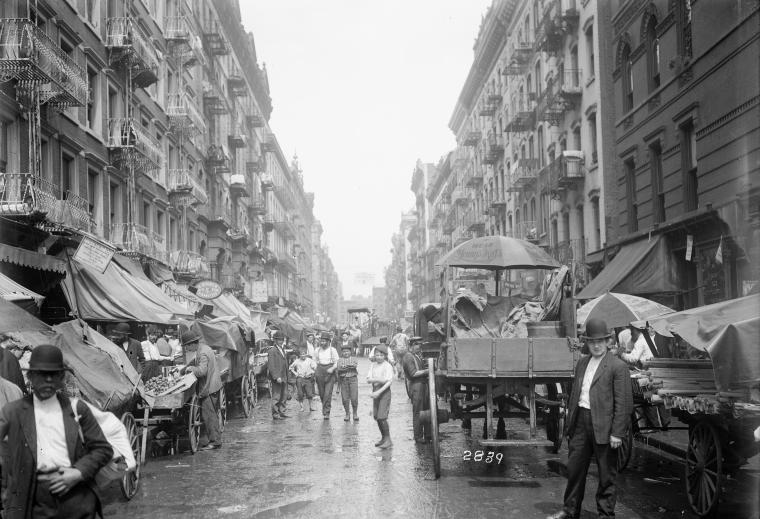
New York is not the only city with tenement buildings, but these particularly crowded multi-family dwellings have had a significant effect on New York City’s character and history.
Tenement homes are part of the city's history, architectural look, and sociology, as well as the lifestyles of its current residents. The imprint and influence of the New York tenement are layered upon the city much like the apartments themselves are layered atop each other.
Tenement Defined and Legislated
The Oxford English Dictionary’s primary definition of tenement is "a room or a set of rooms forming a separate residence within a house or block of apartments." It’s a fairly all-inclusive definition that speaks to the historic definitions of tenement as well as its modern and colloquial connotations, which the dictionary also addresses with this: "a house divided into and rented out as separate residences, especially one that is run-down and overcrowded."
The term itself is legally neutral, but most people—especially in New York City—apply the connotation of run-down and overcrowded when using it.
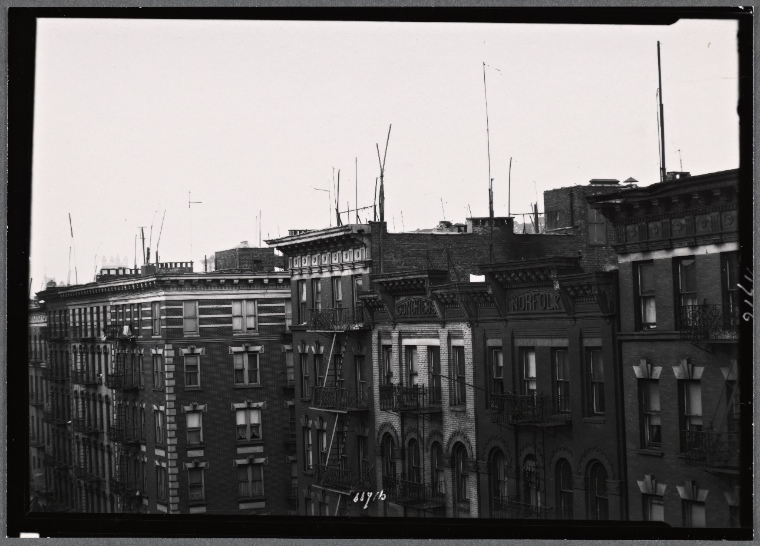
In New York City, rapid growth and the imposition of the New York City street grid both played major roles in the look, density, and availability of housing for New Yorkers. In A History of Housing in New York City (also in electronic format), author Richard Plunz states "the relationship between housing and social class quickly became institutionalized with exaggerated differences between the upper and lower ends of the social spectrum."
Plunz explains that New York housing problems date back to the mid-19th century, and that "the horrors of the tenement were perfected in New York, but most reform legislation also originated there, as did most housing philanthropy." The legislation appeared as a series of "Tenement House Acts" in 1867, 1879, 1901, and 1919.
A tenement is legally defined in New York by the Tenement House Act of 1867 as "any house, building, or portion thereof, which is rented, leased, let or hired out to be occupied or is occupied, as the home or residence of more than three families living independently of one another and doing their own cooking upon the premises, or by more than two families upon a floor, so living and cooking and having a common right in the halls, stairways, yards, water-closets, or privies, or some of them." This definition applied to much of the available housing of the time, legally classifying those buildings as tenements.
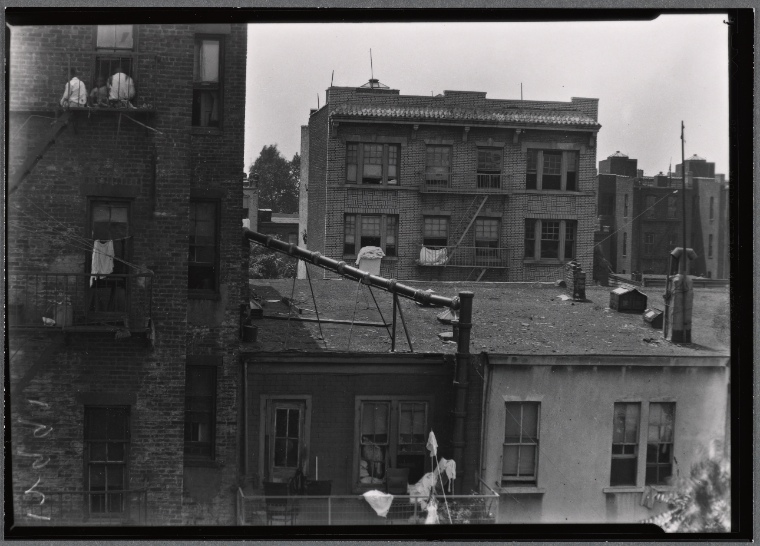
General Timeline and History
Tenements originated from subdivided structures that originally had other purposes, such as single-family homes, with the usually substandard and small living quarters leased to the poor. In the 19th century, the primary housing available to New York’s low-income residents were those subdivided buildings and self-built shanties, clustered together in different areas of the city.
New houses were not often built for the poor, and the affluent mostly built single-family homes for themselves. Tenements built specifically for housing the poor originated at some time between 1820 and 1850, and even the new buildings were considered overcrowded and inadequate.
By the end of the Civil War, "tenement" was a term for housing for the urban poor, with well-established connotations for unsafe and unsanitary conditions. With the city's population nearing one million people at the time, there were more than 15,000 tenement buildings in New York City, not yet including the Bronx, Brooklyn, Queens, or Staten Island.
The Manhattan grid allowed for lots measuring 25 feet by 100 feet, and tenements tended to occupy about 90 percent of these lots, allowing little to no room for natural light or air shafts. Buildings that did not occupy the entire lots often had "rear tenements" built into the yards behind them, providing even worse conditions than rooms of the buildings that faced the streets. It was all very dense, very crowded, and unregulated—conditions that fostered disease and inhumane living conditions, which soon caught the eye of reformers.
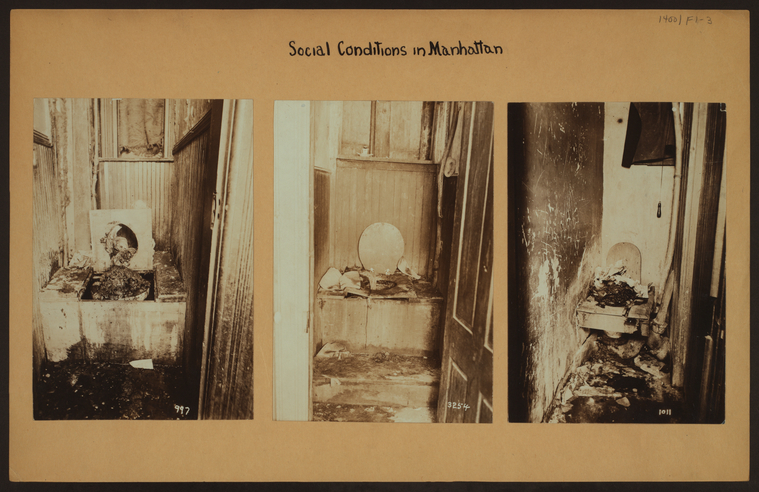
In 1865, the "Report of the Council of hygiene and public health of the Citizens' Association of New York upon the sanitary condition of the city" (available digitally via Sabin Americana) was published. This thorough analysis of the housing conditions of the time contained extraordinary detail and classified more than 65 percent of the city’s population as living in substandard housing conditions.
The report was followed by the city’s first comprehensive housing law, the aforementioned Tenement House Act of 1867. The law famously required fire escapes on buildings and windows in each room, but was largely ineffective in improving the lives of tenement dwellers. Additional Tenement House Acts brought more reforms in 1879, 1901, and 1919, with the 1901 law considered a pivotal point. Tenement houses built before were called "old law tenements;” any built after were called "new law tenements." In 1903, the Tenement House Department was finally organized and took over inspection of the tenements from the variety of city departments that previously had to enforce different sections of the laws.
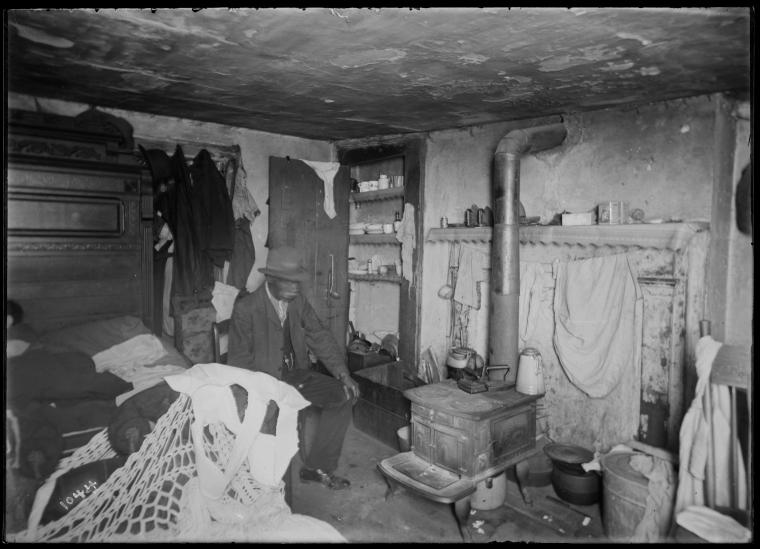
Through the latter half of the 19th century, a variety of commissions, exhibits, and published works pushed the conditions of the tenements into the popular conscience and spurred legislators into enacting reform.
Numerous publications appeared, such as The tenement house problem, in which statistics, diagrams, photographs, and eyewitness reports were used as persuasive arguments for housing reform. In particular, Jacob Riis’ use of photography in How the Other Half Lives was effective in presenting the housing conditions to a wider public. Riis’ work can be explored more thoroughly in this anthology of his work on biblioboard, and his papers at the NYPL can also be accessed.
Tenement dwellers were educated about changes to the laws that would affect their housing conditions with publications such as "The tenants' manual; a handbook of information for dwellers in tenement and apartment houses and for settlement and other workers" (also available digitally), which advocated for awareness of sanitation methods, legal matters, and even available recreation opportunities. Social workers and newspapers also helped publicize this information.
The tenement laws were challenged in courts and amendments, and a new "Multiple Dwelling Law" took shape in 1929. The laws regarding apartment housing in New York are currently called the “Multiple Dwelling Law” and are currently in force. From the 1930s to the 1960s, the concept of "Slum Clearance," summarized in this article, was the dominant policy surrounding New York’s tenement houses. Slum clearance initiatives often had the backing of federal funding, and, initially, little opposition. By the 1950s, the impact of this policy led to many of the tenement buildings being demolished.
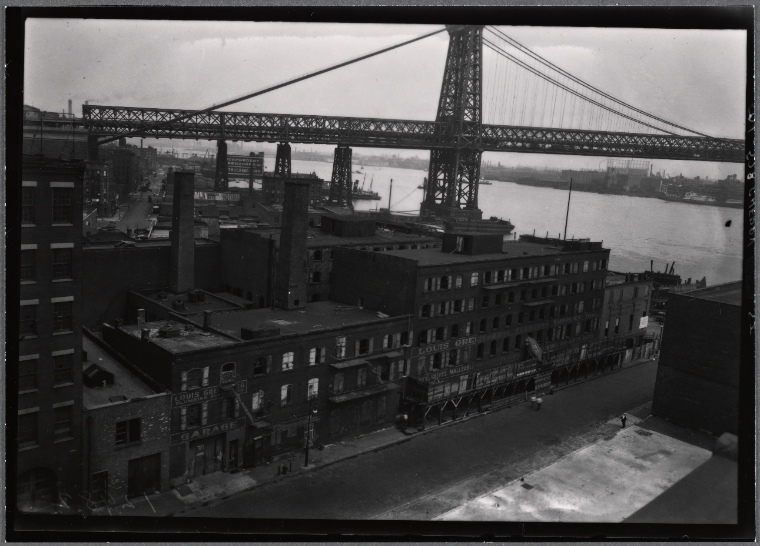
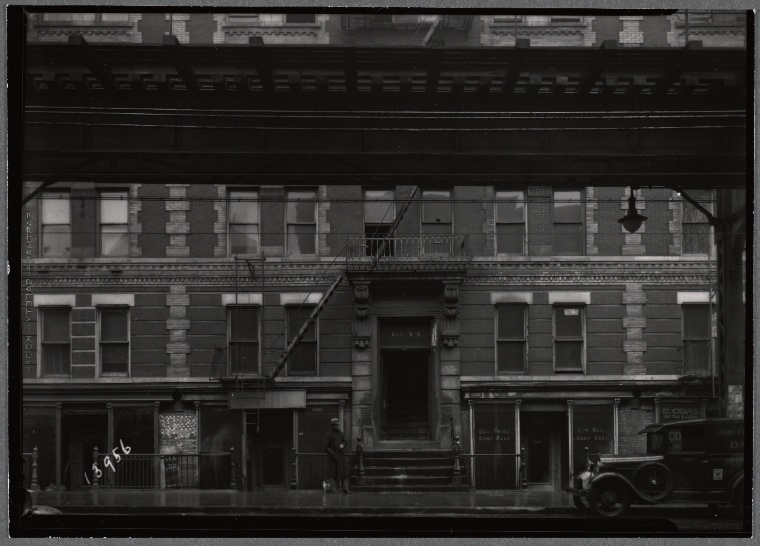
Researching New York’s Tenement Housing History
The New York Public Library holds multitudes of materials on our city’s history. The scope ranges from the built environment to social conditions, from natural history to scientific discovery, and the amount of material available to research a cornerstone issue such as tenement housing is vast.
Our collections, primary and secondary sources, archives and monographs, digital and print, text and visual, are embedded in collections across the research libraries. These tremendous holdings are always available for researchers to access.
Tenement Conditions Documented in Photographs
Photographs are terrific primary sources and, in the context of tenement house history, are particularly potent because of their use in the reform movement and the slum clearance programs. Some of the Library’s digitized tenement photos include:
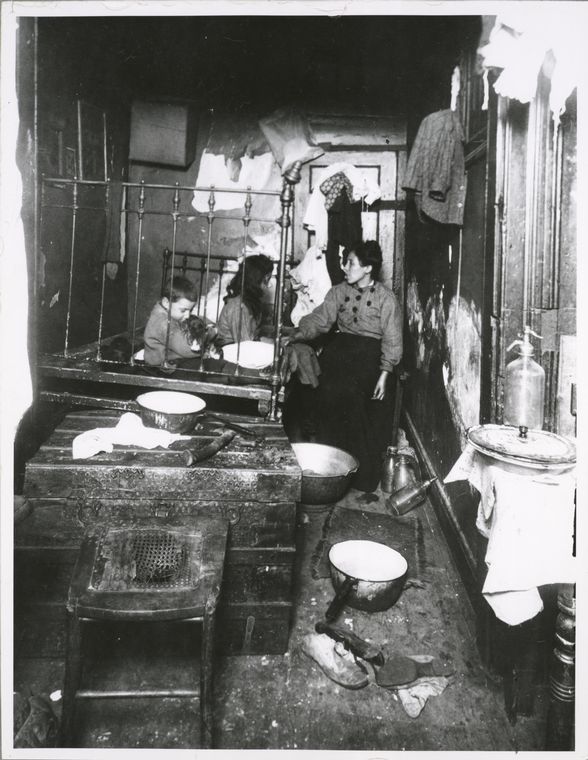
Photographic negatives of the New York City Tenement House Department, 1902-1914
A collection of photographic negatives taken by inspectors of the New York City Tenement House Department from 1902 to 1914 (just a few are featured in this post). It is comprised of roughly 8,000 glass plate negatives and 249 mounted plates, which were used by the Tenement House Department for exhibition purposes.
The collection includes exterior views of buildings, domestic interiors, backyards, and plumbing and sanitary facilities, as well as images of street scenes and local residents.
The New York Tenement House Department was created in 1901 to enforce new building standards and document safety and health violations in New York City's overcrowded multi-family dwellings. Inspectors, including staff photographers, surveyed and documented the living conditions of the occupants, including information pertaining to light and ventilation, fire safety, sanitation, and interior layout.
Photographs taken by New York City Tenement House Department inspectors in the 1930s
A collection gifted to NYPL by the New York City Department of Housing and Buildings in 1942. The original nitrate negatives (4,198 images) were microfilmed on four 35mm reels before being destroyed. A representative selection of images (roughly 1,100 in number) was preserved with interpositives and contact prints.
The collection includes exterior and interior shots of buildings, as well as images of street scenes, storefronts, fire report cards, and various employees of the Tenement House Department. It provides a visual documentation of over one thousand photographs of tenement conditions, and includes some striking images.
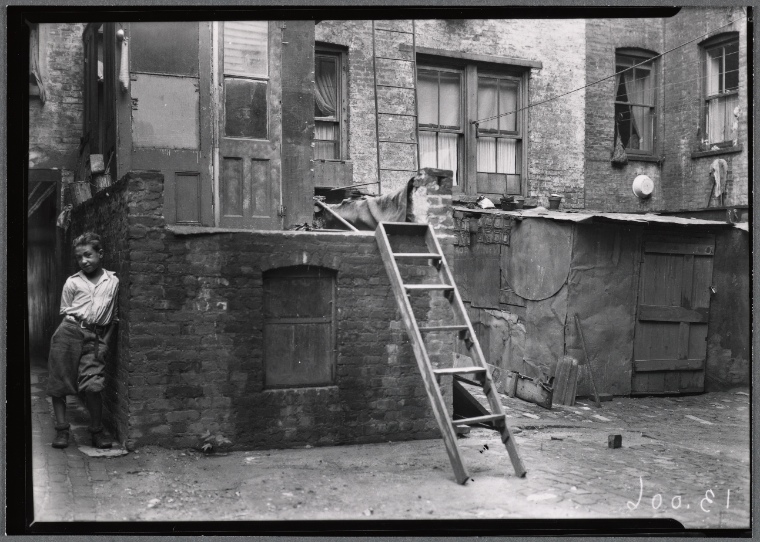
Photographs concerning labor, housing and social conditions in the United States by Lewis W. Hine (1874-1940)
Hine was an American sociologist and photographer who used his images as a tool for social reform, documenting conditions of inadequate housing and child labor. Among Hine’s wide scope of photographs are some particularly of tenement conditions.
Photographs documenting the New York City Housing Authority’s Slum Clearance Program
These can be found in the larger collection called Photographic views of New York City, 1870's-1970's
Using Pamphlets as Primary Source Documents
The Library holds a substantial collection of pamphlet volumes, smaller booklets of usually fewer than 50 pages, that have been bound together and contain related subject matter.
Pamphlets were not always collected by libraries, so they can be difficult for researchers to find, and their ephemeral nature means that some are in quite poor condition. But contemporary publications pertaining to tenement reform were frequently distributed as pamphlets, so access to them is valuable to those seeking primary sources. Highlights from the Library’s holdings include:
-
The menace to the home from sweatshop and tenement-made clothing by the Consumers' League of New York City
-
Tenement house reform in New York, 1834-1900. Prepared for the Tenement house Commission of 1900
-
Housing conditions and tenement laws in leading American cities. Prepared for the Tenement house commission by Lawrence Veiller (many of the items Veiller published concerned the state of tenements, as he was the secretary of the Tenement House Commission).
-
Methods of improving the homes of the laboring and tenement house classes of New York by Stephen Smith, read before the N.Y. Public Health and Dwelling Reform Associations, April 10th, 1875.
-
Extracts from editorials of New York papers upon the report of the Tenement House Commission
-
An act in relation to tenement houses in cities of the first class, March 13, 1901
-
Shall the law permit rooms in tenement houses to be six feet wide?
-
The problem of the old law tenement: An address before the New York Metropolitan Association of Real Estate Boards; This presents the effect of the laws on the landlords, an interesting counterpoint to the literature of the reformers.
Maps
Those researching housing conditions can use maps to track building by building growth in an area. Maps were also produced by city agencies and reformers to illustrate conditions in ways that text could not convey.
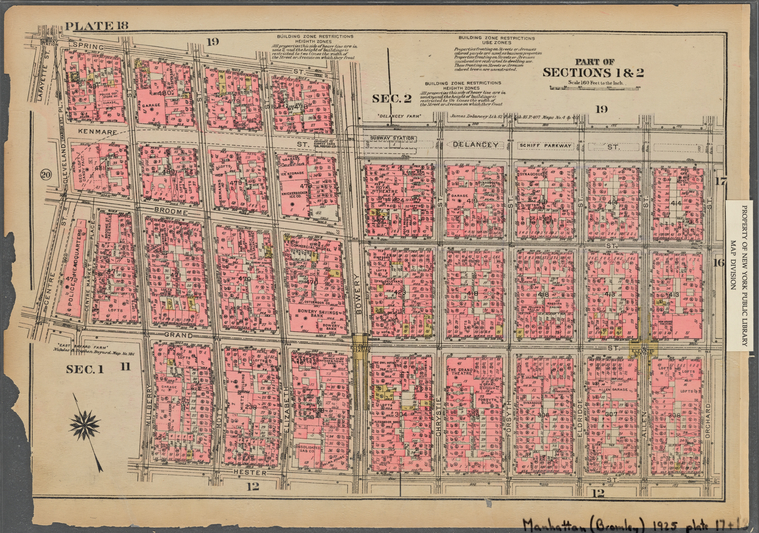
-
The Tenement-House Committee maps
The Tenement-House Committee produced maps to illustrate population density and the ethnic neighborhoods of Manhattan. -
Fire Insurance Maps
Fire insurance maps give detailed building-specific data for a city. By comparing fire insurance maps of a specific area of the city over time, one can see the changes in development of an area: height of the buildings, how much lot they occupy, from which materials they are constructed, how many are on a block, etc. -
Sanitary and social chart of the Fourth Ward of the City of New York, to accompany a report of the 4th Sanitary Inspection District, made to the Council of Hygiene of the Citizens' Association by E.R. Pulling, M.D. assisted by F.J. Randall
This map color-coded tenements, shanties or untenable housing, and privies—including those noted as being in "extremely offensive condition," and the occurrence of contagious disease such as smallpox and typhoid fever.
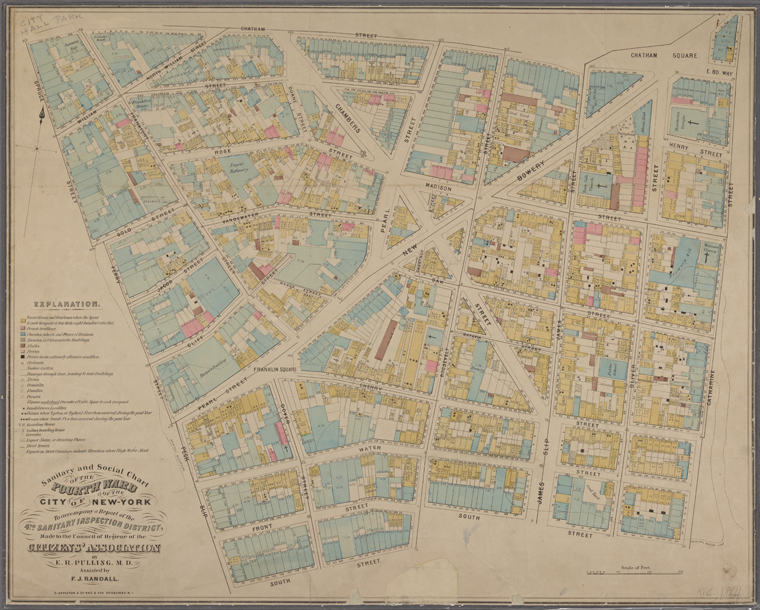
In the News
The word "tenement" appears in some of our earliest digitized newspapers, in advertisements for rentals and sales.
The ProQuest New York Times (1851-2013) database has more than 106,000 results for the word "tenement," which included reporting on the Health Officer’s account to the Common Council about increases of deaths in the city, and how some of those increases could be attributed to overcrowded dwellings and the rental of cellars as housing.
Additional digitized historical newspapers can be found on the Library’s database menu.
In the Archives
In addition to the Jacob Riis papers, other collections in the Library’s Manuscripts and Archives Division provide powerful primary source documentation of tenement building and the housing reform movement in New York.
Among the useful materials:

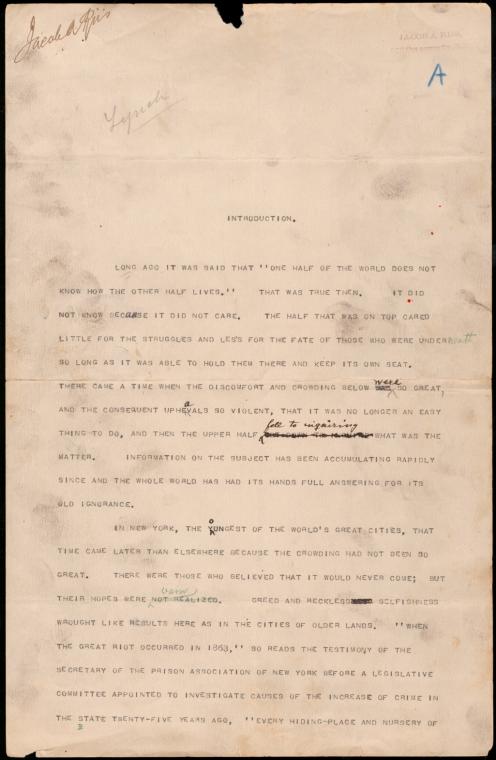
-
Letters written for the New York Tenement House Commission that are part of the Richard Watson Gilder papers
-
People's Institute records, featuring the work of Charles Sprague Smith, to teach the theory and practice of government and social philosophy to workers and recent immigrants in New York City. It sponsored lectures, classes, concerts, and other community activities principally on Manhattan's Lower East Side.
-
Lillian D. Wald papers; Wald was a public health nurse and social worker on New York City's Lower East Side, a pioneer in American social work and public health
-
The American Institute of Social Service Exhibition, Photographs exhibition of American social conditions in 1900s, which show the character of tenements and other buildings
-
Committee for Slum Clearance, 1954-1959, part of the Robert Moses papers.
Modern influence
In many ways, New York City remains defined by its density, a characteristic brought about by compact living. Slum clearance policies did not eliminate tenements from New York—the buildings still populate our blocks in various states of repair and are still homes for thousands of New Yorkers.
The Tenement Museum is a powerful public history example of the influence and impact of New York’s tenement housing. It has been a significant catalyst for researchers, who have produced a number of scholarly works and other publications including the museum’s own newspaper, The Tenement Times.
Tenement Museum Reading List:
-
A tenement story : the history of 97 Orchard Street and the Lower East Side Tenement Museum
-
Biography of a tenement house in New York City: An Architectural History of 97 Orchard Street by Andrew S. Dolkart
-
97 Orchard : An Edible History of Five Immigrant Families in One New York Tenement by Jane Ziegelman
-
97 Orchard Street, New York: Stories of Immigrant Life by Linda Granfield, with photographs by Arlene Alda
-
Six Heritage Tours of the Lower East Side: A Walking Guide by Ruth Limmer in collaboration with NYC's Lower East Side Tenement Museum
-
At the Edge of a Dream: The Story of Jewish Immigrants on New York's Lower East Side 1880-1920 by Lawrence J. Epstein
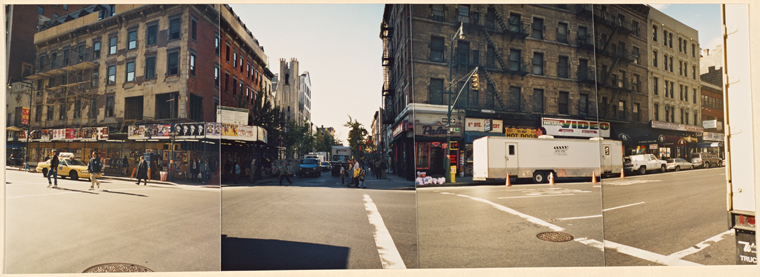
Read E-Books with SimplyE
 With your library card, it's easier than ever to choose from more than 300,000 e-books on SimplyE, The New York Public Library's free e-reader app. Gain access to digital resources for all ages, including e-books, audiobooks, databases, and more.
With your library card, it's easier than ever to choose from more than 300,000 e-books on SimplyE, The New York Public Library's free e-reader app. Gain access to digital resources for all ages, including e-books, audiobooks, databases, and more.
If you don’t have an NYPL library card, New York State residents can apply for a digital card online or through SimplyE (available on the App Store or Google Play).
Need more help? Read our guide to using SimplyE.

Comments
This was a very helpful
Submitted by Carl C. (not verified) on March 8, 2020 - 1:08pm
Tenement history, Lower East Side
Submitted by Maren Sampson (not verified) on July 11, 2020 - 3:04am